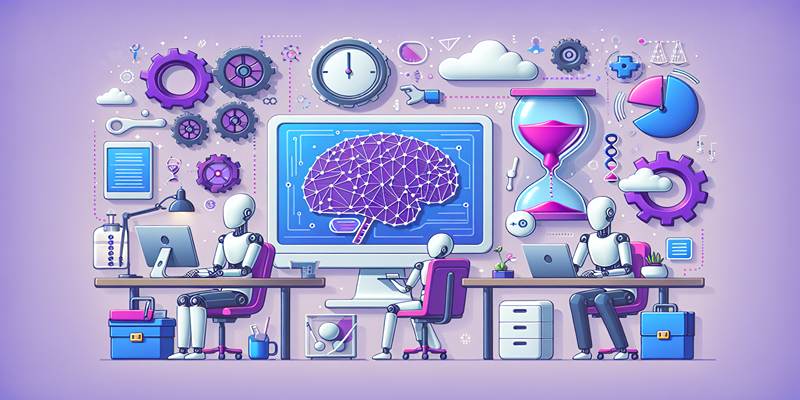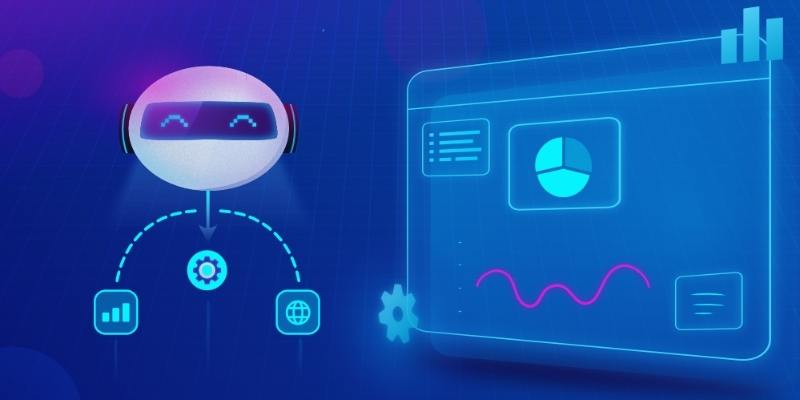Managing large buildings or facilities is no easy job. It takes a lot of work to keep things running smoothly—from fixing broken systems to tracking energy use. But with artificial intelligence (AI), facility management is becoming much easier and smarter. AI helps automate many daily tasks, save time, and improve how buildings function. This post will explain how AI is changing facility management, how it helps with maintenance and operations, and what the future looks like for smart buildings.
What Is AI in Facility Management?
AI in facility management refers to using smart technology to handle building operations. It includes things like:
- Monitoring building systems in real-time
- Predicting when equipment will need repairs
- Managing energy use and reducing waste
- Automating lighting, heating, and security systems
By using data from sensors and software, AI can make decisions that usually need human supervision. It helps reduce errors, save money, and increase the comfort and safety of the people in the building.
How AI Automates Maintenance Tasks
Facility teams used to only fix things when they broke. This kind of care is called "reactive." But if you wait for problems to happen, they might get worse and cost more to fix. With AI, upkeep can move from being reactive to being proactive. It means the method lets the team know about problems before they happen.
Here’s how it works:
Predictive Maintenance Using AI
AI collects data from equipment using sensors. This data includes temperature, pressure, vibration, and more. When the AI detects something unusual, it alerts the team.
For example:
If a motor is vibrating more than usual, AI can detect it and recommend checking it before it fails.
Benefits of predictive maintenance include:
- Fewer breakdowns
- Lower repair costs
- Less downtime
- Longer equipment life
AI and Daily Operations Automation

Facility operations include lighting, HVAC (heating, ventilation, and air conditioning), cleaning schedules, and security. Managing all of this manually is time-consuming and can lead to errors or inefficiencies. AI simplifies this by automating routine tasks.
Smart Building Systems
Smart buildings use AI to adjust settings automatically. For example, lighting systems can dim or brighten based on natural light or occupancy. HVAC systems can adjust temperatures room-by-room, depending on how many people are there. It makes operations more efficient and keeps people more comfortable.
AI-based operational tasks include:
- Smart lighting control
- Energy use monitoring and reduction
- Air quality control
- Automated door access and security systems
These automated systems learn over time and keep improving based on patterns.
Benefits of Using AI in Facility Management
AI has many advantages when used in buildings and large facilities. Here are some of the most important ones:
Cost Savings
AI helps avoid major repairs through early warnings. It also saves energy by managing systems better. Over time, this leads to big cost savings.
Improved Efficiency
By automating tasks, teams can focus on bigger issues. Everything runs smoother, and systems are more reliable.
Better Comfort and Safety
AI creates a comfortable environment by adjusting lighting, temperature, and air quality automatically. Security systems are also smarter and faster.
Real-Time Monitoring
With AI, facility managers can monitor equipment and building conditions 24/7. It allows for quick responses when something needs attention.
Real-World Example: Smart Campus Management
Many universities now use AI to manage their campuses. These systems track classroom usage, energy consumption, and even restroom cleaning schedules.
One example:
- Sensors in classrooms detect when a room is empty and turn off lights and HVAC.
- AI schedules cleaning for restrooms based on usage, not just time.
It saves energy, improves cleanliness, and reduces manual work.
Challenges in Using AI for Facility Management
While AI offers many benefits, it’s not without challenges. Here are a few things that facility managers should be aware of:
- High setup costs: Installing sensors and smart systems can be expensive at first.
- Training needs: Staff must learn how to use the new systems.
- Data privacy: As AI collects lots of data, protecting that information is important.
- Maintenance of AI systems: Even smart systems need updates and care.
Despite these challenges, many organizations find that the benefits far outweigh the difficulties.
Key Technologies Supporting AI in Facilities

To function effectively, AI systems depend on a network of supporting technologies:
- IoT (Internet of Things): Connects sensors, equipment, and systems to collect real-time data
- Machine Learning: Helps systems learn patterns and make predictions
- Digital Twins: Create virtual models of buildings for performance simulations
- Cloud Computing: Enables remote access and storage of large data sets
- Automated Workflows: Allow task assignment and monitoring with minimal manual input
Together, these technologies form the backbone of smart building ecosystems.
How to Start with AI in Facility Management
If you're considering using AI in your facility, here are a few simple steps to get started:
- Assess current systems: Look at what tasks are currently manual or inefficient.
- Start small: Begin with one area, like lighting or HVAC automation.
- Choose the right tools: Use trusted AI software and sensor systems.
- Train your staff: Make sure your team understands how to use the new system.
- Monitor results: Track cost savings, energy use, and performance improvements.
Starting small and scaling up is the best way to adopt AI cost-effectively.
Conclusion
AI in facility management is changing how buildings are maintained and operated. Through automation, real-time data analysis, and smart decision-making, facilities can run more efficiently, save costs, and provide better experiences for occupants. While challenges exist, the benefits of adopting AI are substantial—especially when viewed as a long-term investment in smarter, more sustainable operations. As technology continues to evolve, AI will become an essential part of modern facility management strategies.




